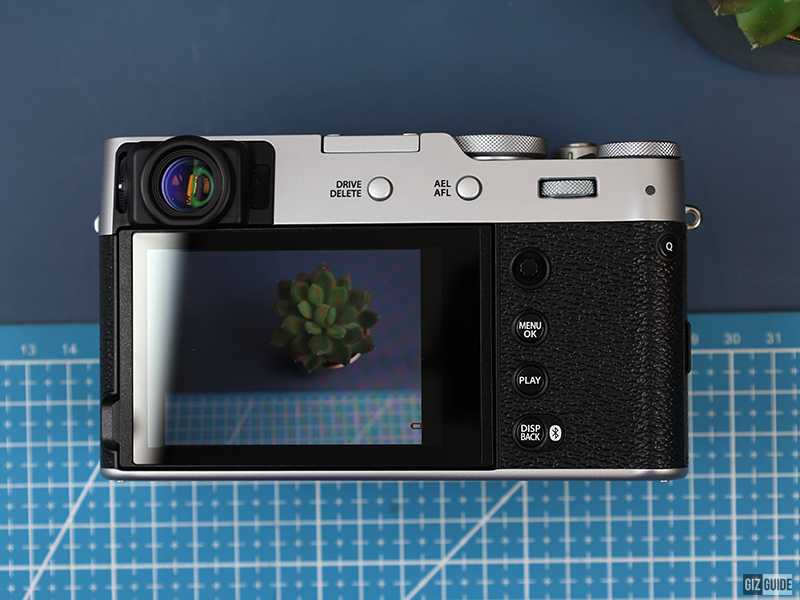FUJIFILM is on a roll where the company launched three cameras within the latter half of 2022. First was the FUJIFILM X-H2s back in June 2022 then after the FUJIFILM X-H2. A few months later they introduced the XT5. In 2024, the brand introduced the X-S20 and the new GFX100II.
The new X100VI inherits the majority of the specs and features of the bigger X-T5 but shares the DNA of the previous X100V which makes it both powerful spec-wise while being premium and compact.
It features the new X-Trans 5 HR CMOS BSI sensor and the X-Processor 5 that enables to camera to have improved Deep-learning AF, 6.2K 4:2:2 internal video recording and the new Reala Ace film simulation.
In the Philippines, the X100VI is priced at PHP 103,990 in either Black or Silver colorways. A limited edition version was also announced that is priced at PHP 130,990.
Let's take a deeper look at the hardware.
Meet the FUJIFILM X100VI!
 |
| FUJIFILM X100VI's outer packaging |
It comes in the familiar black FUJIFILM X-series box that has been used for several years now but has a large X100VI label on the top and on the sides.
 |
| Box inclusions |
Inside the box are the camera, USB-C cable, the battery, the neck strap, the strap anchors and the documentation.
 |
| Aluminium front lens cover with FUJIFILM logo |
At first glance, the X100VI looks very similar to the X100V but with nearly similar dimensions. However, the new X100VI is slightly bigger (thicker by 2mm) and slightly heavier to accommodate the new IBIS mechanism.
The OVF, EVF and Hybrid EVF switch has also changed to a new design with gear teeth like design instead of the older knob with a recessed red bar.
 |
Rear design
|
The back retains majority of the old design from the X100V except for the change in the labels on some of the buttons along with the change of placement of the 'drive/delete' button'. It is now nearer to the right side of the camera as opposed to be beside the EVF.
 |
| Tilting touch screen |
The EVF and rear 2-way-tilting touch screen returns but now the tilting mechanism can tilt further up to 45 degrees as opposed to the previous generations tilting up to 30 degrees only.
 |
| Tilt-screen on the field |
It is bright enough to be visible under direct sunlight.
 |
| Top and bottom |
The top plate has seen minimal change aside from the X100VI branding and the slight increase in thickness. Because of the new sensor, the new base ISO is 125 and it is reflected on the ISO dial.
On the top plate are the branding, the hotshoe, the Shutter dial, the Inner ISO dial, the Shutter release button, the On/Off button, the Function button and the exposure compensation dial.
We are mostly happy with the minor changes however, we wished that FUJIFILM had added a dial lock for the compensation dial as it is easily changed with minor movement.
At the bottom are the battery hatch, tripod screw mount and the speaker grill.
 |
| Battery and SD card slots |
Inside the battery hatch are the battery slot and full-size UHS-I SD card slot.
The camera uses the same Fujifilm NP-W125s batteries first released with the X-T2 and is rated for up to 450 shots in economy mode. It can go down to 270 shots when using boost mode and the EVF.
 |
| Left and right |
On the left side of the camera are the Focus mode switch and the left strap lug while on the right are the 2.5mm audio jack, USB-C port, micro-HDMI port and the right strap lug.
Camera Samples
 |
| X100VI Reala Ace camera sample 02 |
 |
| X100VI Reala Ace camera sample 03 |
|
 |
| X100VI Reala Ace camera sample 04 |
|
 |
| X100VI Reala Ace camera sample 05 |
|
 |
| X100VI Reala Ace camera sample 06 |
 |
| X100VI Reala Ace camera sample 07 |
 |
| X100VI Reala Ace camera sample 08 |
 |
| X100VI Reala Ace camera sample 09 |
 |
| X100VI Reala Ace camera sample 10 |
Quick thoughts
 |
| Glass for scale |
The X100VI is a refresh of the popular X100V. It updates the internals to be at par with the current line of FUJIFILM X-series cameras and makes it competitive with the current competition.
We love the addition of the new 40MP sensor, IBIS and the X-Processor 5 because it brings the image quality up to par with recent cameras while offering the new Autofocus system that can now intelligently track subjects. So far, the touch touch-to-track function has followed the subjects we throw at it with a 9/10 hit rate.
We also have to praise the Japanese brand for being able to add an IBIS mechanism with minimal changes in overall camera size. This means they added functionality while retaining one of its key selling points.
Other changes like the OVF/EVF knob, the 45-degree two-way tilting touch screen, the IBIS and the digital Tele conversion are nice additions but could be argued to be quality-of-life changes that some could live without.
One of our other new favorite new features is the inclusion of Reala Ace film simulation because of this high contrast and tonality while accurately reproducing colors.
Because of the nature of the compact 23mm f/2.0 lens, users have to get the adapter ring and a protector filter to take full advantage of the weather sealing.
The size of the camera has also limited the type of ports that it has including the unreliable micro HDMI port and the 2.5mm audio jack. But I would rather have a small and compact camera over these ports.
There are a ton more features that we are excited to test soon.
Stay tuned.
What do you guys think?









































Post a Comment